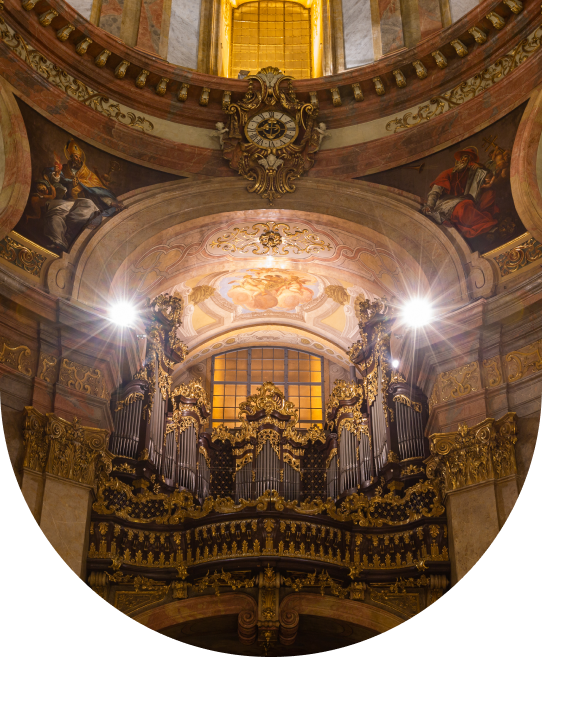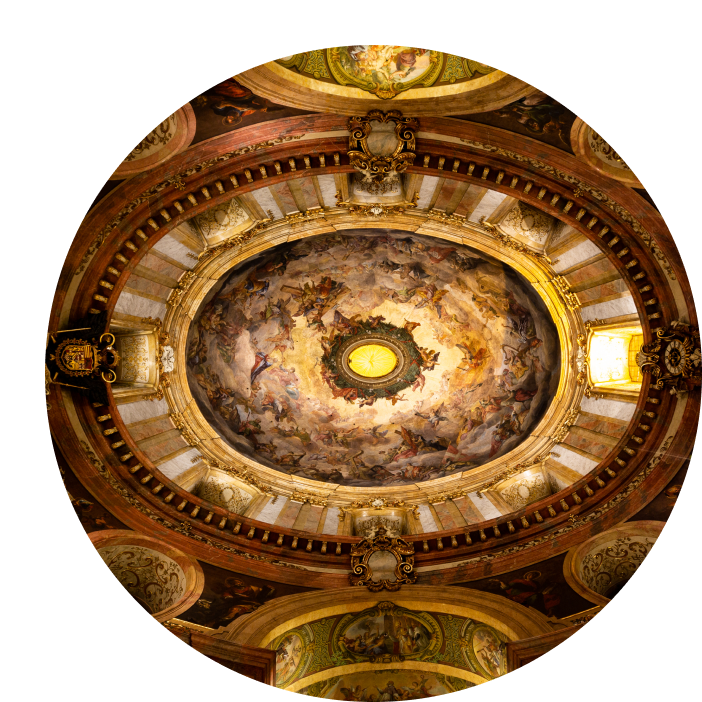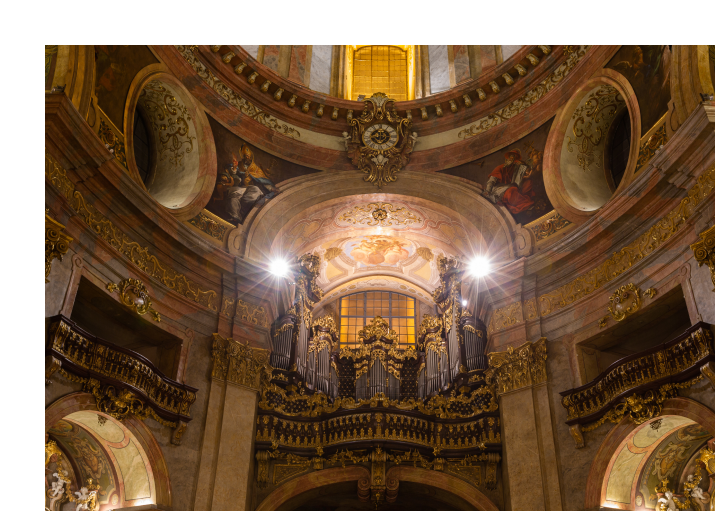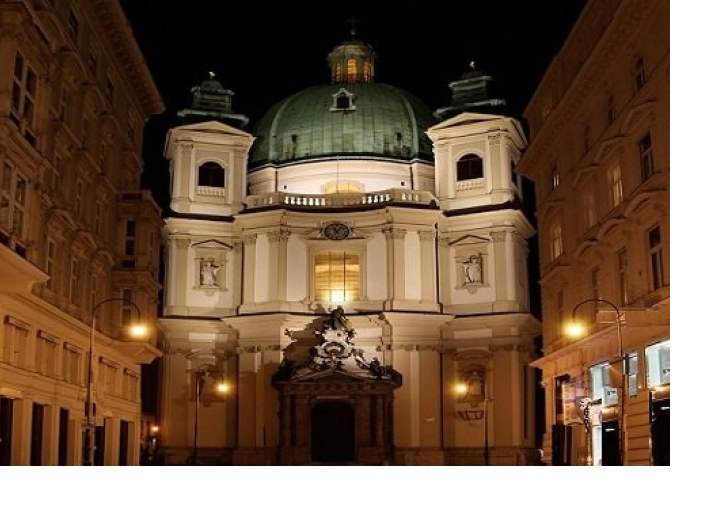About Church
Attend an evening concert in one of life's spaces that cannot be repeated
You have just entered one of Vienna’s most beautiful and famous churches. Its architectural and artistic qualities make St. Peter’s one of Vienna’s most impressive places of interest and we are pleased to welcome you here. Please remember that St. Peter’s is above all a house of God.
About Church
Attend an evening concert in one of life's spaces that cannot be repeated
You have just entered one of Vienna’s most beautiful and famous churches. Its architectural and artistic qualities make St. Peter’s one of Vienna’s most impressive places of interest and we are pleased to welcome you here. Please remember that St. Peter’s is above all a house of God.
The History Of The Church Of St. Peter
The Baroque church was built by a lay fraternity: the Fraternity of the Blessed Trinity, of which the Emperor was a member. St. Peter’s was completed and consecrated in 1733. In 1970 Cardinal König, the Archbishop of Vienna, entrusted the care of St. Peter’s Church and its pastoral activities to priests of Opus Dei (www.opusdei.org). They continue this work today.
Vienna’s first Christian church was built here at a time when Vienna was still a Roman camp under the name of Vindobona. The original Roman church was later replaced by a three-naved Romanesque church, which in turn made way for the present magnificent example of Baroque architecture, built by Lukas von Hildebrandt at the beginning of the 18th century. So Holy Mass hasbeen celebrated daily at St. Peter’s for 1600 years.


About Church
Before leaving, do look again at the painting above the main altar. This work of art (by M. Altomonte) portrays the healing of the lame man by St. Peter and St. John at the Beautiful Gate in Jerusalem. Before you leave the church you might pray for the unity of all Christians. St. Peter’s has worked for this goal since 400 AD.When you are outside in St. Peter’s Square (Petersplatz), take a little time to walk around the church and admire the harmonious and dynamic lines of the building. Note the relief by R. Weyr depicting the supposed founding of St. Peter’s Church of the Middle Ages by Charlemagne. Admire the well proportioned apse with the statues of St. Michael and St. Peter (by Mattielli), and the front portal decorated with figures of lead, by A. Altomonte. Note the inscription commemorating Emperor Leopold’s vow to build this church at the time of the plague of Vienna in 1679/80.

PLEASE do not forget that you are in a church. Be respectful, and speak quietly.
This church is dedicated to the Most Blessed Trinity. So, you will discover several representations and symbols of this central mystery of the Catholic faith in the church: for example, above the high altar, on the baldachin over the ornate pulpit by M. Steinl, and in the outstanding fresco in the cupola, which was painted by J. M. Rottmayr. From the very beginning, devotion to the Blessed Virgin Mary has been observed here, as well as the adoration of the Blessed Trinity. Devotion to Our Lady has always been important at St. Peter’s, and indeed it was in this church that the May devotions in honour of Our Lady were first held in Vienna. There is evidence of this deep devotion in the paintings inthe church: over the high altar there is a painting (by L. Kupelwieser) of the Immaculate Conception. On the side altar of St Anthony of Padua there is a painting of the Immaculate Heart of Mary (by the same 19th century artist). On the other side, you can see the gentle image of “Our Lady of Help” by the Viennese painter S. Rosenstingl(1766).

Take another look up at the cupola: you can see the imperial coat of arms with the motto of Leopold I over the triumphal arch. On either side you can see the richly decorated oval windows, flanked by the carefully executed portraits of the four Evangelists and four Latin Fathers of the Church, which were painted by the Viennese artist J. G. Schmidt.
At the back of the church you can see one of the most beautiful Baroque organs in Austria
The portrait of the Mother of Good Counsel is a gift from Pope Leo XIII. The depiction in the fresco of the cupola of the Crowning of Our Lady, and (opposite the pulpit) the beautiful statue of Our Lady of Bunzlau above therepresentation of the martyrdom of St. John Nepomuk, was sculpted by L. Mattielli. St. Peter’s is indebted to M. Steinl for the interior decoration (including the pews), but also for the warm religious atmosphere radiating from these works and inviting one to prayer. The reliquary shrines – beneath the two side-altars at the front with their representations of the Holy Family (by A. Altomonte) and St. Michael (by J. G. Schmidt) – are likely to draw your attention. The shrines contain the bones of two martyrs, brought from the Roman catacombs in 1733 by Cardinal S. Kollonitz. They were clothed in the style of the period and placed in these reliquaries. Under the picture of the Holy Family you can see an image of St. Josemaría Escrivá (by M. Fuchs), the founder of the Opus Dei personal prelature. He was canonized by Pope John Paul II in 2002.



